Duluth’s historic Wirth building gets facelift
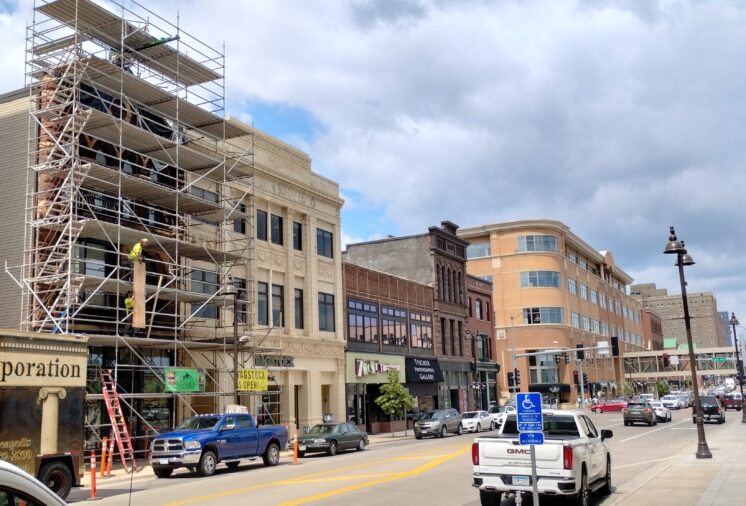
The historic Wirth building, 13 W. Superior St., at left, received a major facelift this month. Owners said more than 30 splaying limestone blocks were replaced or repaired. (Photo by Mark Nicklawske).
A historic architectural gem in Duluth received a major facelift this month as crews repaired the aging facade of the city’s first pharmacy — a building that now serves as home to a couple that pioneered downtown living in the 1990s.
Bud and Ruth Darling, who own the Wirth building, 13 W. Superior St., used a Twin Cities contractor to rebuild and secure the facade of their three-story property after cracks and splaying were found in upper-level stonework. The repair project cost tens of thousands of dollars and took more than a month to complete.
The Wirth building was constructed in 1886 and is listed on the National Register of Historic Places. The Darlings purchased the property in 1990, spent two years restoring it and have lived in its top two floors ever since. Lizzards Art Gallery and Framing occupies the street-level space.
Ruth Darling said a recent roof repair led to the discovery of more serious issues.
“The roofers were up there and said, ‘Oh, you got some problems.’ On top of the building there’s some big limestone slabs and they said they were cracking,” she said. “Not only was that a big problem but there was … a lot of loose sandstone. They said: ‘You should really get this repaired.’”
The Darlings were concerned chunks of stone could fall on pedestrians below. But how do you replace stonework that weighs hundreds of pounds and was hand carved by old-world craftsmen 137-years ago?
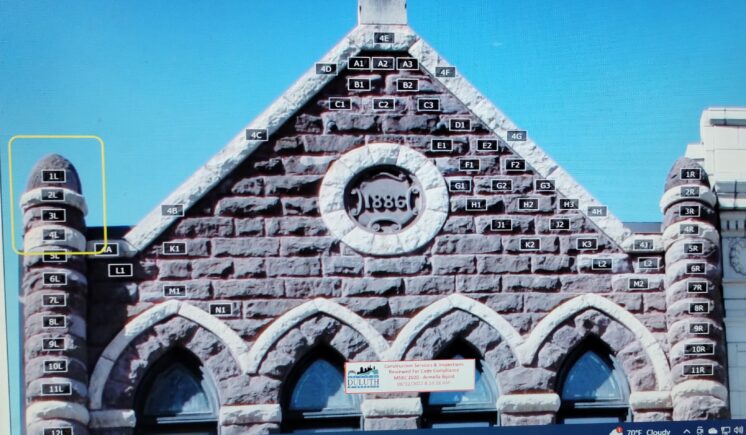
This contractor photo shows the location of compromised building block on the Wirth building facade. Replica stones weighing hundreds of pounds were used as replacements. (Photo courtesy of Ruth Darling).
Ruth Darling said the project was delayed about six months as contractors looked for the right materials and a mason who could complete the job.
“They finally found the stone but then they had to find somebody who could carve it,” she said. “It’s a big job, just in preparation.”
Building Restoration Corporation, based in Roseville, Minn., replaced 30-35 stones using a heavy-duty crane delivered especially for the project. Work continued as traffic was detoured during Sidewalk Days in downtown Duluth.
“The stones were so heavy they didn’t think their own crane would handle it,” said Darling. “When you saw the slabs sitting on the trailer it was like: ‘Holy cow!’ They were really, really heavy.”
In addition to removing and replacing aging slabs on the facade, workers repaired decorative cones atop the building corners and rehabilitated a crown of white limestone at the roof line.
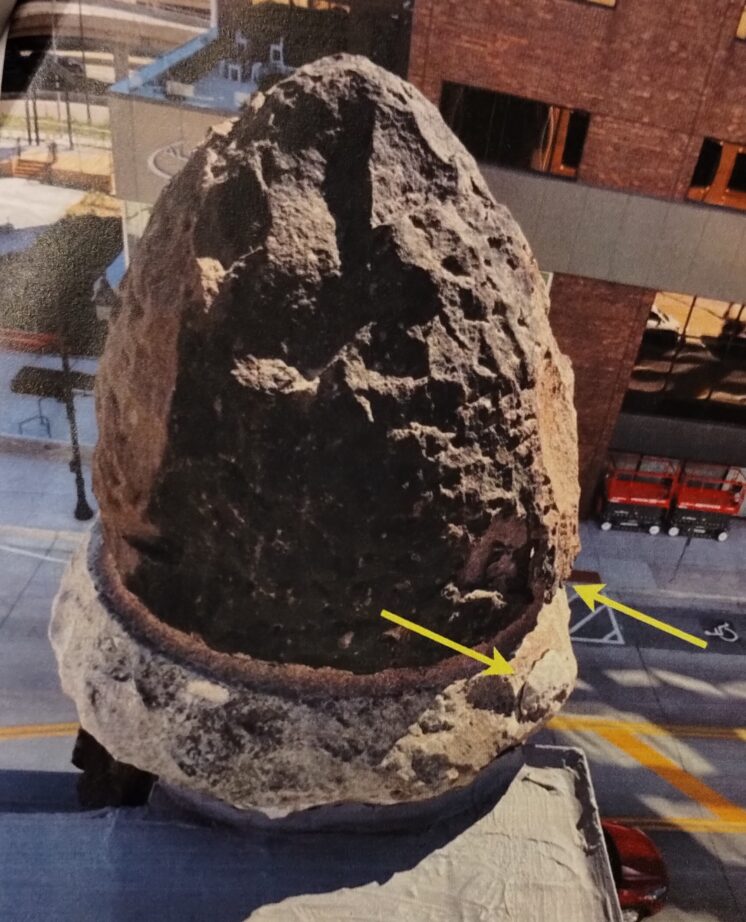
Arrows show weather damage to the iconic cones atop the Wirth building corner facade. The building was constructed in 1886. (Photo courtesy Ruth Darling)
“It’s stable now,” said Darling. “We want to prevent any lawsuits from people getting hit on the head, I don’t have enough money to cover that lawsuit. But you know, it was deteriorating and anybody who has a house that was deteriorating, whatever the kind of siding, you have to fix it.”
And to be sure the Wirth building has been a house for more than 30 years.
The Darlings worked and raised a family in Chicago and were frequent Boundary Waters visitors — eventually purchasing a canoe outfitter on the Gunflint Trail. In 1990, after their children were grown, they bought the long-neglected Wirth building and moved to downtown Duluth.
“It had been vacant for about 10 years,” said Darling. “It was just full of trash. My son and husband must’ve made 15 trips to the dump with just wood and doors. … There were old things; you name it, it was here. It wasn’t that the interior was trashed, it was just that there was a lot of trash in the interior.”
The Darlings gutted the building, installed all new utilities and spent about two years making it their new home. Wood trim was stripped of paint, workers hung new drywall and maple floors were refinished and rehabilitated with matching products. By 1993, the couple was living on the top two floors and Bud, an accountant, worked out of a connected second-floor office.
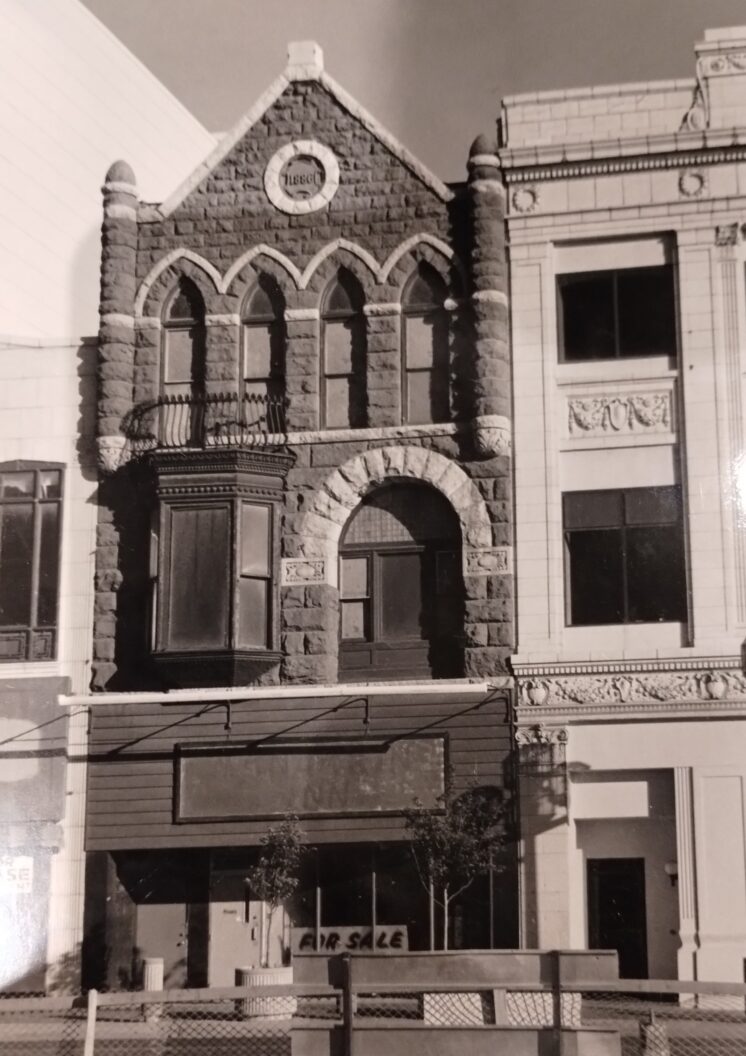
The Wirth building stood vacant for 10 years before current owners Bud and Ruth Darling purchased it in 1990 and renovated the neglected property for commercial and living space. This photo was taken in 1990. (Photo courtesy of Ruth Darling).
The home has been opened to historic property tours conducted by the Duluth Preservation Alliance. In 2001, Duluth News Tribune readers voted it one of the Top 10 buildings in the city for architecture.
According to the 1991 National Register of Historic Places registration, the building was the first designed in the Richardsonian Romanesque style by famed Duluth architect Oliver Traphagen and his short-lived partner George Wirth. Other major buildings Traphagen contributed to designing include the Duluth City Hall and Jail (1889) and the historic Central High School (1892).
According to Duluth history website Zenith City Online, pharmacist Max Wirth commissioned the building and operated his business on the first floor for decades. The Wirth family lived on the third floor and a second floor featured a variety of offices, including Duluth’s first female doctor, Dr. Mary Knauf McCoy from 1902 to 1910.
The Wirth family closed the pharmacy in 1940 and sold the building in 1950. A variety of businesses operated the space until it became mostly vacant around 1980.
In 2008, the Duluth News Tribune newspaper credited the Darlings with starting a downtown living trend.
“When we first moved here it was just dead,” said Ruth Darling. “In fact, at one point we said: maybe this is a mistake.”
But the subsequent decades saw more people purchase smaller, historic buildings and remodel them for living space. Now larger buildings are being converted for multi-family residential living including the former St. Louis County Jail and historic Duluth Central High School.
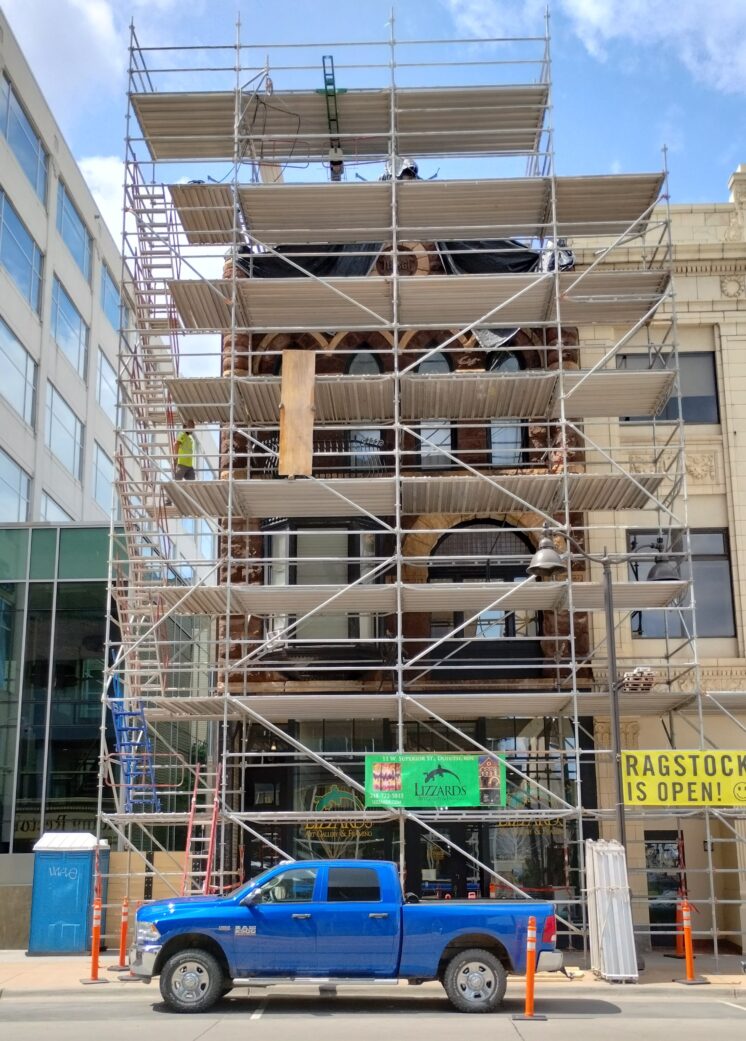
Workers have spent about a month repairing and replacing stone work on the historic Wirth building. Lizzards Art Gallery and Framing occupies the street-level commercial space. (Photo by Mark Nicklawske)
Lizzards Art Gallery and Framing owner Jeffrey Schmidt moved his business into the Wirth building storefront in 2006. He said his business stayed open during the project, which caused no problems and will help preserve one of downtown Duluth’s oldest buildings.
He credited the Darlings for their commitment to the historic property.
“They’ve always been such good stewards of the building ever since they moved in decades and decades ago. They are doing it right,” he said. “In the end people won’t even know what was done, but with historic buildings that’s the goal.”
Recommended Links:
Leave a Comment
Only registered members can post a comment , Login / Register Here














No Comments